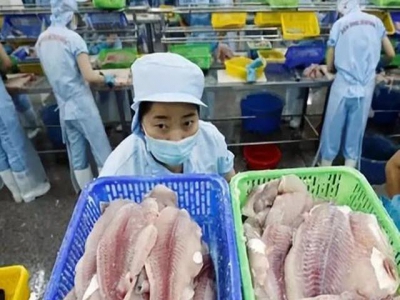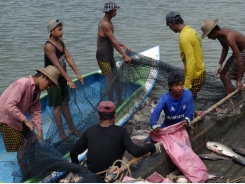Vietnam fretting competition from other pangasius-producing countries

Vietnam, the world’s biggest pangasius supplier, has started to think seriously about other potential rivals in Asia, as competition is likely to heat up in the future.
Vietnam has retained its global monopoly in pangasius supply for the last 20 years. Because pangasius is rather easy to farm and demand is high in major markets, including the United States and China, a number of countries have stepped in to produce the fish, placing a considerable competitive pressure on Vietnam, Vietnam’s Ministry of Agriculture and Rural Development said in a statement.
China is a fast-growing market for Vietnamese pangasius, but it will potentially become a major pangasius supplier in the future, the ministry said.
China has farmed about 10,000 metric tons (MT) of pangasius on Hainan Island, one of the country’s centers of aquaculture, Nhu Van Can, director of the Vietnam’s Aquaculture Department, a subdivision of the country’s Fisheries Directorate, told The Saigon Times during an industry conference in August.
“China has reportedly applied new farming technologies and they have got success,” Nhu said.
Currently, Vietnam accounts for about half of the global pangasius supply, with the remainder provided by India, Bangladesh, Indonesia, Malaysia, and China, according to an official from the investor relations department of Vinh Hoan, Vietnam’s biggest pangasius firm.
Vietnam’s 2018 pangasius output is estimated to reach 1.33 million metric tons, up 6.4 percent from 2017; followed by India with an estimated 640,000 MT, (rising 38.5 percent year-on-year); Bangladesh with 454,312 MT (up 4.3 percent); and Indonesia 110,000 MT (up 4.8 percent year-on-year), according to the Vinh Hoan official.
The other countries mainly farm pangasius to meet their domestic demand, while most of Vietnam’s production is for export. If their supply exceeds domestic demand and they export the surplus, then there is a competition with Vietnam, the Vinh Hoan official said – while adding that exports from these countries are currently of no concern for Vietnam.
The official also said, at present, China is not a concern because its own pangasius output remains low. And Chinese consumers tend to prefer imported products over domestically farmed fish.
But more competition, while daunting, will also inspire Vinh Hoan towards innovation of its production technologies and products to secure its leading global position in the industry, the official said.
In the larger picture, the Vietnam ministry said many local pangasius companies view pangasius breed production as a decisive factor in the competition against other suppliers. In March 2018, the Agriculture Ministry approved a three-tier cooperation plan for production of high-quality pangasius breeds in the Mekong Delta, home to Vietnam’s pangasius farming, a project schedule to run through 2025.
The scheme is expected to produce about half of the Mekong Delta’s estimated demand of between 2.2 billion to 2.5 billion high-quality fries a year by 2020, which will be raised to between 2.5 billion to 3 billion high-quality fries a year – 100 percent of the delta’s expected demand – by 2050.
The first of the three tiers involves research institutes and universities that use advanced techniques in selecting pangasius breeders, using breeding production techniques, and transferring the techniques to the second tier. The second tier includes the creation of provincial pangasius breed producing centers and companies’ pangasius breed nurseries; and the third tier includes establishments that nurture pangasius from newborn to fingerling stages.
The cooperative agreement between the government and numerous pangasius farming companies and related organizations was signed on 21 August. The project was touted during a pangasius conference chaired by Agriculture Minister Nguyen Xuan Cuong later in August.
Related news
Tools

Phối trộn thức ăn chăn nuôi

Pha dung dịch thủy canh

Định mức cho tôm ăn

Phối trộn phân bón NPK

Xác định tỷ lệ tôm sống

Chuyển đổi đơn vị phân bón

Xác định công suất sục khí

Chuyển đổi đơn vị tôm

Tính diện tích nhà kính

Tính thể tích ao



 Aquatic product exports rake in 7.24 billion USD…
Aquatic product exports rake in 7.24 billion USD…  Cà Mau takes steps to improve super-intensive shrimp…
Cà Mau takes steps to improve super-intensive shrimp…